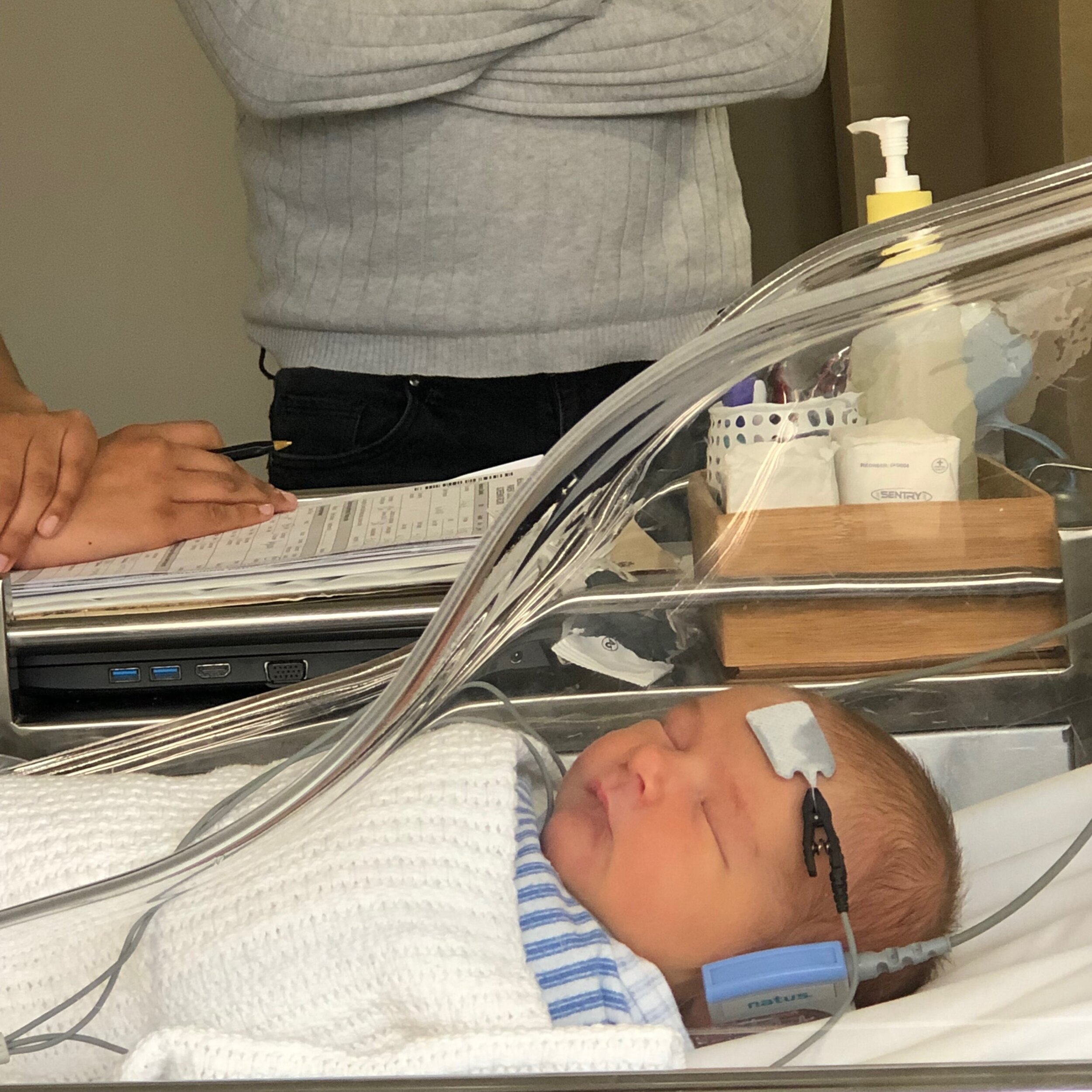
Next steps after diagnosis:
The Referral Pathway
The Infant Diagnostic Test (IDT) confirms your baby has a hearing loss. Following the diagnosis of a permanent childhood hearing loss, a multidisciplinary team of professionals are involved in the referral pathway. This multidisciplinary team will provide additional information, guidance and support along the journey to ensure your child reaches their full potential. Your audiologist will assist you to attend necessary appointments and meetings in the following months.
Along the journey you will meet a number of different health care professionals who will assist you and your child. Some of these professionals may include:
+ Paediatric Audiologist
Paediatric Audiologist at Hearing Australia. Hearing Australia provides comprehensive services to Australian children (up until the age of 26 years). A paediatric audiologist can perform hearing and balance assessments, fit and manage hearing aids, and provide rehabilitation programs.
+ Paediatrician
Paediatrician is a specialist doctor who provides medical care for babies, children and teenagers. Paediatricians specialise in the management of the health and development of the child.
+ General Practitioner
General Practitioner will be your first point of contact, guiding or referring you to various other specialists, service providers and groups.
+ Ear, Nose and Throat (ENT) Specialist
Ear, Nose and Throat (ENT) Specialist will perform any treatment that may be required, provide ongoing management, as well as, clearance for a hearing aid fitting.
+ Counsellors or Social Workers
Counsellors or Social Workers can assist you on an emotional and practical level by providing support services, counselling, and advocacy. Their primary concern is the emotional wellbeing of families before, during, and after diagnosis.
+ Early Intervention Programs
Early Intervention Programs are offered by both government and non-government organisations. These services aim to provide a holistic approach where a team of professionals work together with you and your child to facilitate the best outcomes. These programs are not limited to medical wellbeing, but extend to intellectual, social, emotional and physical development. Services include: one-to-one language development programs, playgroups, parent education groups and medical services.
+ Speech Pathologists
Speech Pathologists provides evaluation and intervention services for language, speech and cognitive communication development. They assist parents and provide tools for improving your child’s speech and language learning skills.
+ Ophthalmologist
Ophthalmologist are doctors specialising in conditions or diseases associated with the eyes. It is advisable that children diagnosed with hearing loss undergo an eye check performed by an ophthalmologist. Hearing loss can be linked to eye issues.
+ Geneticists
Geneticists are specialised physicians who may be required to perform genetic analysis in order to determine the nature and inheritance of the hearing loss.






Audiological Intervention
In addition to early intervention services, audiological intervention can also support the development of a child with UHL. There are various audiological-based options available. Some of which include: monitoring, hearing aids, and FM systems. For all the options available, intervention should be individualised to the child, factoring in the needs of the child and family.
Monitoring
It is recommended to monitor your child’s hearing closely. This involves having a hearing test every 3-6 months for infants and toddlers and annually for school aged children.
It is important for parents and caregivers to monitor the child’s responses to sounds and report any changes to their Audiologist or GP.
When a child has a hearing loss, protecting their remaining hearing is essential. Monitoring your child’s ear health and hearing is one way to do this. This is especially important because children are prone to ear infections and these can be associated with temporary hearing loss. A temporary hearing loss in your child’s good ear can have a greater impact on speech and language development. Signs such as ear tugging, irritability and sore ears are some of the indicators of ear infections. If you are concerned about your child’s ear health, you should visit your GP.
Another way to protect your child’s remaining hearing is to prevent excessive exposure to loud sounds that can lead to noise induced damage. It is important to teach your child to take care of their hearing. For example, avoiding exposure to really loud sounds or not turning the volume too loud when listening to headphones.
In some cases, a UHL can develop into a bilateral hearing loss. It is advisable to visit your Audiologist or GP if there are any concerns about your child’s “good” ear.
Hearing Aids
Research about whether to fit a hearing aid to a child with UHL has been inconclusive. Your child may benefit from a hearing aid in the impaired ear, although not all children with UHL will benefit from hearing aids. Hearing aids may be the most appropriate option if the child is having difficulty at home and in the classroom. However, one problem is that hearing aids are often not satisfactory in noisy environments such as the classroom.
There are different types of hearing aids and your audiologist will help you decide what’s best for your child. Importantly, the child’s and family’s preferences will always be considered first. If it is decided to go ahead with a hearing aid fitting, children and young adults up until the age of 26 years can obtain a device, at no cost, through Hearing Australia.
Frequency-Modulated (FM) Systems
FM systems are a popular method of audiological intervention for children with UHL. FM is the wireless transmission of sound to the listener. FM systems are helpful in noisy environments (such as the classroom and restaurants) for children with a UHL. They can be used whether the child has a hearing aid or not.
